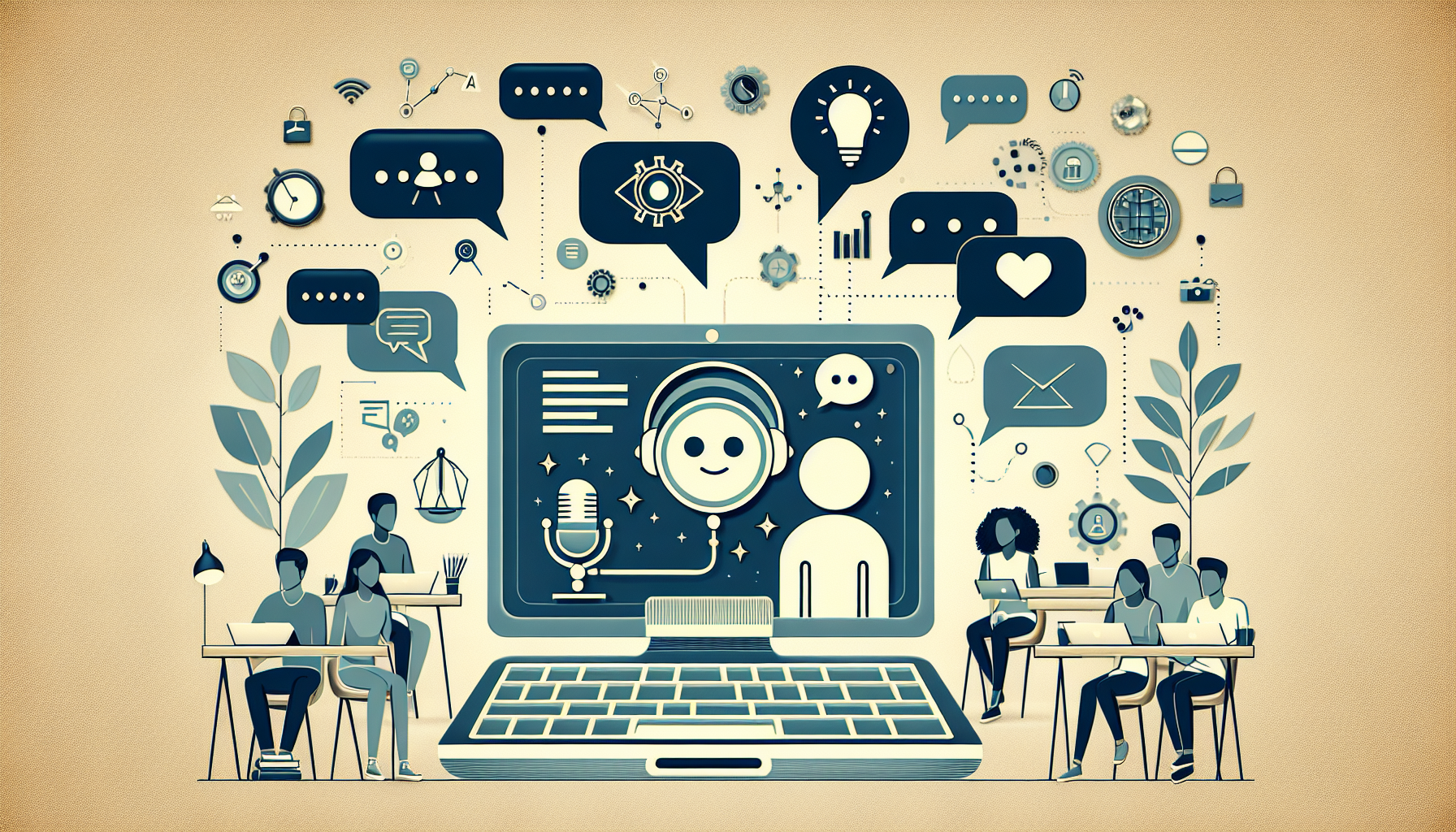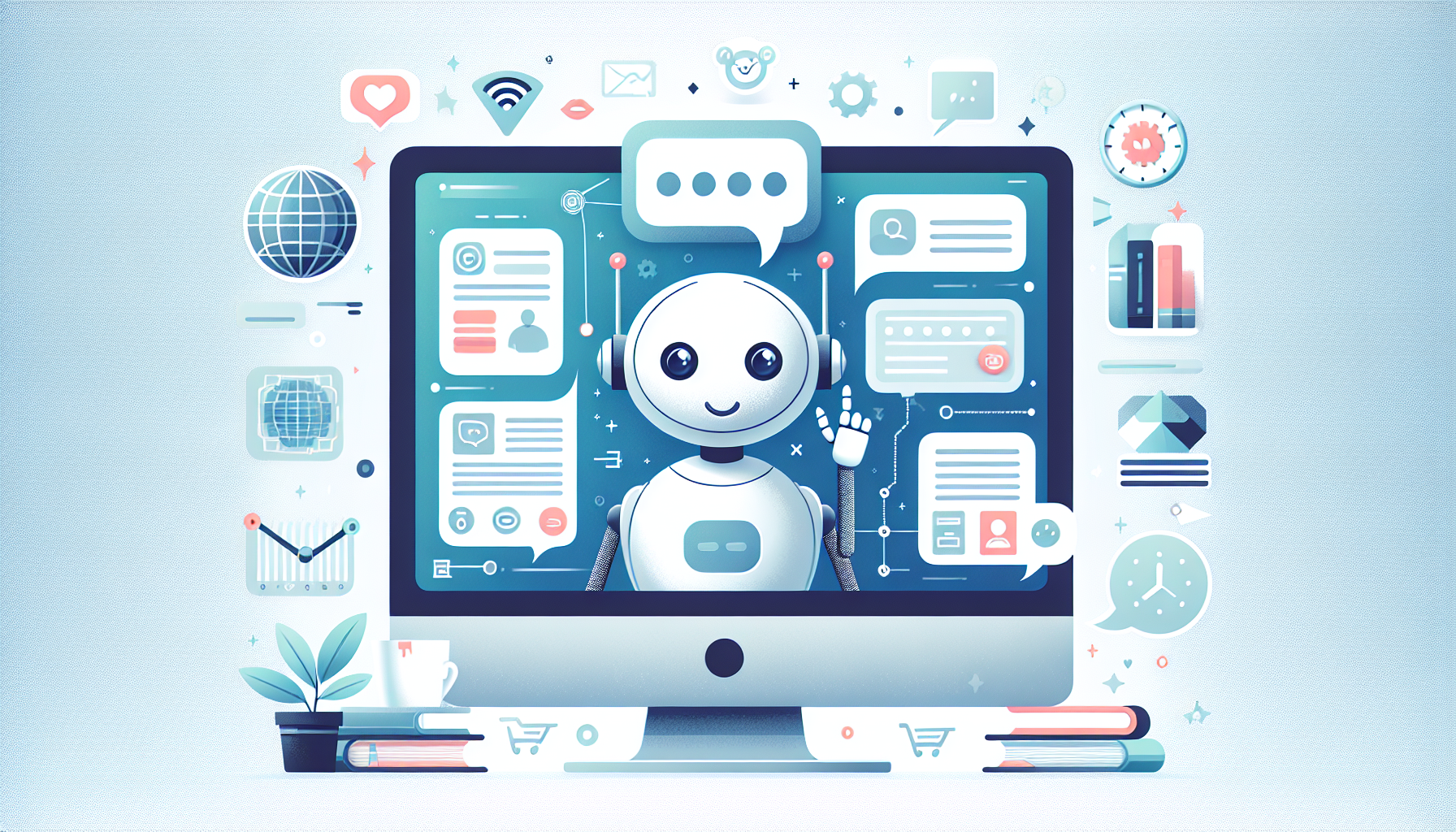Engaging students in courses can feel like a daunting task, especially with everyone juggling their busy schedules. It’s natural to wonder how to provide support and keep participants interested without spending endless hours on emails and phone calls. If that sounds familiar, you’re not alone!
But what if I told you that chatbots could be your secret weapon? By utilizing these AI assistants, you can offer instant support, create personalized experiences, and boost overall satisfaction. Stick with me, and I’ll share how chatbots can transform the way you connect with your students.
From streamlining course navigation to gathering valuable feedback, the opportunities are endless. Let’s dive into how you can harness the power of chatbots to enhance customer engagement in your courses.
Key Takeaways
- Chatbots provide instant support, enhancing customer engagement by answering questions immediately.
- They personalize learning experiences by assessing users’ preferences and offering tailored content.
- Chatbots streamline course navigation, helping students quickly locate resources without frustration.
- Quick solutions from chatbots boost customer satisfaction and can help reduce shopping cart abandonment.
- Automated notifications keep students informed about deadlines and important events, reducing missed opportunities.
- Interactive content via chatbots keeps students engaged and reinforces learning through quizzes and polls.
- Gathering feedback through chatbots helps improve courses and shows students their opinions matter.
- Integration with CRM systems allows for personalized interactions and efficient data management.
- Real-time conversations enable quick issue resolution, enhancing customer trust and retention.
- Overall, chatbots create a more responsive and engaging learning environment that can improve educational outcomes.

1. Use Chatbots for Instant Support and Answers
Chatbots can be a game-changer for businesses looking to enhance customer engagement and satisfaction.
They provide immediate answers to queries, which means customers don’t have to wait around for help.
This instant support can significantly reduce friction in the customer journey, making it smoother and more efficient.
For example, if someone is unsure about your return policy, a chatbot can quickly provide the necessary information without them having to dig through website pages.
Plus, when chatbots communicate through various channels—websites, messaging apps, or mobile—they ensure users can get support wherever they are.
In fact, multi-channel engagement is a real win, with statistics showing that well-integrated chatbots can enhance operational efficiency and address more inquiries at once.
Remember, the goal is to foster an experience where customers feel valued and their questions are answered immediately, boosting loyalty and even spending.
2. Create Personalized Learning Experiences with AI
Personalization transforms how users interact with learning platforms.
By using AI, your chatbot can assess the user’s learning style and preferences to offer tailored content.
For instance, if a user struggles with a particular topic, the chatbot can suggest additional resources or different formats, like videos or interactive quizzes.
This kind of support not only keeps students engaged but also helps them feel understood and supported in their learning journey.
Using chatbots to create personalized paths allows learners to advance at their own pace, which is essential for effective learning.
Incorporating feedback loops where users can express their learning preferences can further refine this experience.
So, if you’re looking to enhance your online courses, consider implementing chatbots to tailor educational experiences that resonate with individual learners.
3. Streamline Course Navigation and Resource Access
A well-organized course can make a huge difference in a learner’s experience.
Chatbots can help users quickly locate resources and navigate through the course materials without the hassle.
Instead of scrolling through multiple links or searching for answers, a student can simply ask the chatbot for what they need.
For example, if they need a specific assignment or study resource, the chatbot can provide direct links or even summarize the information.
This streamlined access keeps users focused and engaged, minimizing distractions and frustration.
Additionally, by tracking common queries, you can identify areas where your course might need better organization or additional resources.
Ultimately, an efficiently structured course paired with responsive chatbot support can lead to better learning outcomes and happier students.

4. Boost Customer Satisfaction Through Quick Solutions
To really up your customer satisfaction game, chatbots are your best friends.
They provide quick solutions to customer problems, making service feel seamless.
This speed matters—did you know that customers are likely to spend more when they feel their needs are addressed promptly?
If a shopper hesitates to complete a purchase, a chatbot can swoop in, answer questions about the product, and even offer a discount.
This proactive engagement can dramatically reduce shopping cart abandonment rates.
Another key factor is the personal touch—using the customer’s name during interactions helps to make them feel valued.
It’s simple: quick responses paired with personalized service can elevate overall satisfaction.
Using chatbots equips businesses to manage a high volume of inquiries efficiently while ensuring that no one feels ignored.
5. Implement Automated Notifications and Reminders
Automated notifications can be a lifesaver for both businesses and customers.
Think about it: life gets busy, and reminders help keep people on track.
Chatbots can send automated alerts for important deadlines, upcoming classes, or even product restocks.
These messages reduce the likelihood of missed opportunities, whether it’s a class registration or a sale.
By keeping customers informed, you reduce the number of service requests that arise from uncertainty.
For example, if someone has signed up for a webinar, receiving a reminder a day before can significantly boost attendance rates.
Plus, incorporating special offers within notifications can surprise and delight customers, enhancing their overall experience.
It’s all about using technology to keep your audience invested without overwhelming them.
6. Engage Students with Interactive Content
Interactivity is the secret ingredient that keeps students glued to their screens.
Using chatbots to deliver quizzes, polls, or interactive tutorials provides a level of engagement that static content simply can’t match.
For instance, imagine a chatbot leading a student through a short quiz following a lesson to reinforce learning.
Not only does this break up the monotony of traditional learning, but it also helps reinforce the material in a fun way.
Plus, students can receive immediate feedback, allowing them to grasp concepts more solidly.
Incorporating elements like gamification can motivate students to participate and stay interested.
Engagement isn’t just about content; it’s how you present it, and interactive elements enhance the experience drastically.
7. Gather Feedback and Conduct Follow-Ups
Feedback is a goldmine for improvement in any learning environment.
Using chatbots makes the feedback process easy and non-intrusive.
After a course or a particular lesson, a quick survey sent via a chatbot can yield valuable insights.
Students can highlight what worked well and what could be improved, helping you refine future courses.
Additionally, following up based on feedback shows students that you value their input.
This two-way conversation builds trust and enhances the learning relationship.
Implementing regular check-ins can also help you gauge a student’s ongoing needs and engagement.
In the end, you’re not just teaching but building a community where everyone feels heard.
8. Integrate Chatbots with CRM Systems and Tools
Integrating chatbots with Customer Relationship Management (CRM) systems can supercharge your operations.
This seamless connection allows chatbots to pull up customer data on request, making every interaction personalized.
A chatbot can automatically log inquiries, track responses, and update customer profiles, saving teams hours of manual entry.
It can also use stored data to remind users about new offers or updates that match their preferences.
For example, if a customer repeatedly asks about a certain product, the chatbot can use that data to send targeted promotions.
This not only improves efficiency but also boosts the chances of a sale since customers appreciate tailored communication.
It’s about leveraging technology to ensure that customer interactions feel like conversations, not transactions.
9. Enable Real-Time Conversations for Quick Issue Resolution
Having the ability to handle issues in real-time is crucial in today’s fast-paced world.
Chatbots can facilitate live conversations that allow customers to explain their problems instantly.
The chatbot can either provide a solution immediately or escalate the issue to a human agent, driving faster resolutions.
Quick responses mean customers leave satisfied and are more likely to become repeat buyers.
Not to mention that real-time conversations help bridge gaps in understanding, making customers feel heard.
This responsiveness is a significant factor in customer retention, as clients return to places where they feel supported.
When customers know they can get quick assistance, their trust in your brand grows.
10. Enhance Overall Learning Experience with Chatbots
Overall, chatbots can dramatically enhance the learning experience for students.
They provide instant support, personalized experiences, and keep learners engaged with interactive content.
By streamlining navigation and resource access, they make it easier for users to find what they need.
Additionally, the feedback and follow-up capabilities allow educators to adjust teaching methods based on student needs.
When employed effectively, chatbots create a responsive, engaging, and personalized educational atmosphere.
Investing time in integrating chatbots into your system can yield significant rewards, improving both retention and outcomes.
For schools and institutions, embracing chatbots means not just adopting technology but enhancing relationships with students.
As you look into ways to elevate your courses, consider how chatbots can play a role in shaping the future of learning.
To further build on your knowledge and techniques in teaching, check out various resources on effective teaching strategies.
Utilizing chatbots will not only streamline your processes but also create an environment where education flourishes.
FAQs
Chatbots can instantly answer frequently asked questions, provide troubleshooting steps, and guide users through processes, enhancing efficiency and reducing wait times for immediate support.
AI enables tailored learning paths based on individual student preferences and performance, fostering engagement and improving retention of knowledge while making the learning process more effective.
Automated notifications keep users informed about important updates, deadlines, and upcoming events, which reduces anxiety, improves engagement, and ensures timely responses to essential activities.
Chatbots facilitate easy collection of user feedback through simple surveys and follow-up questions, enabling organizations to assess user satisfaction and improve their services based on real-time input.
